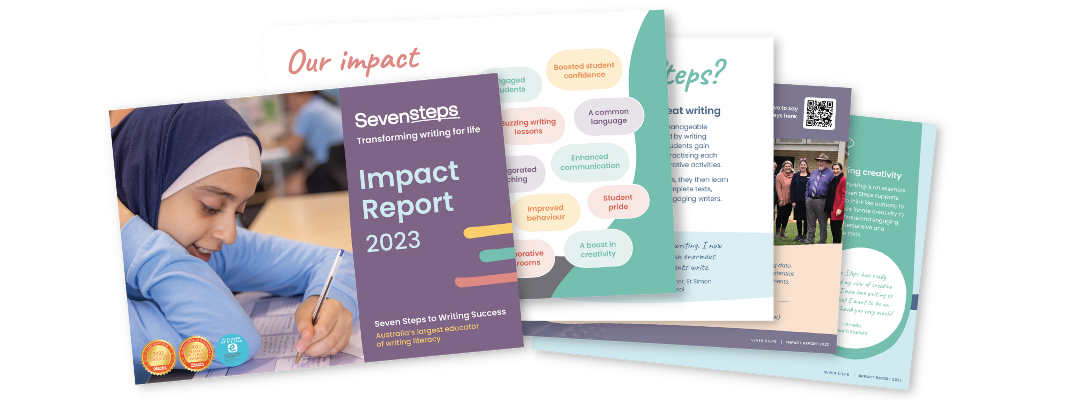No products in the cart.
Seven Steps is the approach to writing
teachers and students love
Since 2005, Seven Steps to Writing Success has been supporting educators to engage every student in
writing and provide the vital literacy skills they need to thrive.
Founded with the goal of empowering 1 million kids to write, we’re proud to say
Seven Steps has now reached over 2 million students … and counting!
How do we do it?
We break it down
Writing isn’t easy. But by breaking it down into manageable Steps, students aren’t overwhelmed by having to write a whole text before they’re ready. Instead, students gain confidence by practising each Step in isolation using fun, collaborative activities.
After mastering the individual Steps, students then learn how to put them all together to write complete texts, becoming independent, creative and effective writers.

I’m amazed that one program can cater to such a diversity of needs, ages and learners, while targeting the same learning outcomes. Breaking writing tasks into chunks and repeating them often really works!
~ Rebecca Drozdoff, Southern Vales Christian College

We follow the evidence
The principles that underpin the Seven Steps are based on best-practice pedagogy and supported by years of educational research. We call them the five ‘secrets’:
- Chunk large tasks
- Repetition builds muscle memory
- Think first, write second
- Verbal is vital
- Consistency creates change.
As an EAL/D teacher, Seven Steps really supports our pedagogy. They understand the importance of quality teaching, explicit modelling and oral interaction!
~ Renata Ninevski, Jesmond Public School
Seven Steps Impact Report
Learn how Seven Steps is changing schools across Australia and transforming writing for life!

We make it explicit
Seven Steps explicitly teaches students the skills that professional authors use. These are the building blocks to great writing – the skills that students need to:
- plan and structure an engaging text
- come up with unique and cohesive ideas
- hook the reader from the first sentence
- bring writing to life with descriptive language.
Check out each of the Steps below to see how they lay the foundations of an engaging piece of writing in any text type.

Seven Steps is consistently recognised for its impact and support for teachers

No gimmicks with Seven Steps, just powerful pedagogy and strategies.
~ Nic Constable, St Ambrose Catholic Primary School
Engage every student in writing
The first Step is Sizzling Starts – guaranteed to hook everyone, even your most reluctant writers!














